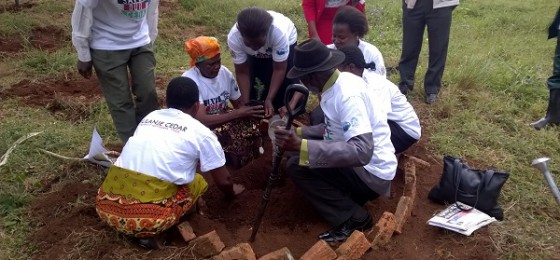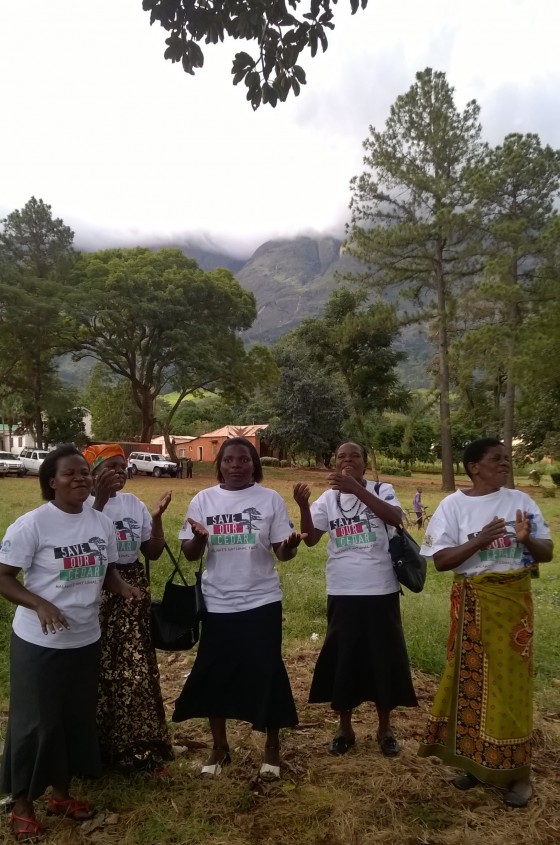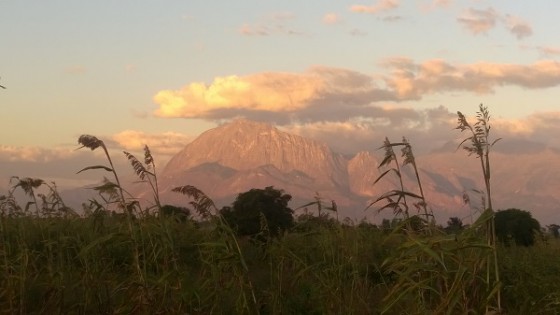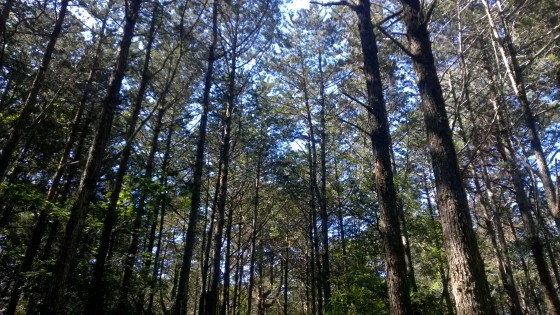
Save Our Cedar - Working together to save Malawi’s national tree
“Do you need a lift?”
I don’t know the person driving, but I see the familiar logo of Mulanje Mountain Conservation Trust on the car. So, ignoring all parental advice, I say….
“Sure, thanks.” And hop in.
I find out my driver, Daniel, set up the first hydropower scheme in Malawi, MEGA, a social enterprise that supplies power to villages on the slopes of Mulanje Mountain. The Mulanje Mountain Conservation Trust (MMCT) is a partner of the hydropower scheme. That explains the car.
I explain what brings me to Mulanje: A new Global Trees Campaign project, working with MMCT and the Forestry Research Institute of Malawi, to replant the mountain with Mulanje Cedar.
“Good luck!” says Daniel.
It’s a short journey, so we don’t have time to talk through his somewhat sceptical sounding remark, but I’m pretty sure I understand.

Mulanje Cedar seedlings
The Mulanje Cedar (Widdringtonia whytei in the Cupressaceae family) is Malawi’s national tree. It is endemic to Mulanje Mountain. The timber is highly sought-after as it is strong, termite resistant and fragrant. It is used to make beautiful carvings sold locally and to tourists visiting Malawi. Largely due to over-exploitation for its desirable timber, Mulanje Cedar is now Critically Endangered and almost lost on the mountain completely.
Logging bans have not worked. In part due to insufficient enforcement, but mainly due to the high number of people whose income is gained solely from Mulanje Cedar harvest. If people stop cutting down the trees, they cut off their family income as well.
Replanting efforts so far have largely failed, due to a poor understanding of Mulanje Cedar ecology, and even sabotage of some planting sites due to resistance to Mulanje Cedar protection measures.
Seems we’ll need more than luck to make this project a success!
Starting on a good footing
But despite all that, I’m feeling positive. The official launch for the project, held in Mulanje earlier this month, was an encouraging start.
Attendees were drawn from local communities, forestry, academia, judiciary and media, to share the plan for saving Malawi’s national tree. The project was welcomed by the Forestry Department and traditional chiefs in the area.

Participants of the project launch in Mulanje, June 2016
Cecilia Chauluka, the Zone Manager (South) for Malawi’s Forestry Department officially opened the project, ending her speech with the rallying call: “The task before us is enormous, but it can be done if we work together”.
Senior Chief Mabuka, on behalf of all the traditional chiefs present agreed stating: “We will join hands to make sure this project is a success”.
Attendees planted 30 Mulanje Cedar seedlings in front of the District Commissioner of Mulanje’s office. Women from the communities surrounding the mountain sang and danced as trees were planted, showing their enthusiasm and support for the project. These women will play a leading role in the project, setting up and running nurseries producing Mulanje Cedar seedlings, a welcome opportunity in an area where employment options for women are limited.

Women from the communities surrounding the mountain sang and danced as Mulanje Cedar seedlings were planted during the project launch
Everyone departed the launch wearing a project T-shirt, and, it felt, with a new conviction and confidence that now is the time to ‘Save Our Cedar’ and we have a good plan and partnerships in place to do it.
A steep climb ahead
Whilst our positive start set us off on a good footing, Cecilia Chauluka’s comment was no understatement.
The climb up Mulanje Mountain is steep and tough. The most gentle route up is a 3 hour hike over bare rock and loose soil. The hardest route would take you up the West face of the mountain - the longest rock climb in Africa! Though that won’t be our regular route up for the project, our commute to work is tricky, to say the least.

Mulanje Mountain
Although this is my second trip to Mulanje, this is the first time I have seen the mountain itself. On my last visit, I climbed the “gentle route”, which proved to me that the mountain was there, but it remained hidden in clouds for the duration of my trip. Not only did I not see Mulanje Mountain, I didn’t see any mature Mulanje Cedars either. Not because of the cloud, but because they’re not there anymore.
Once a carefully managed timber resource sustainably harvested and replanted by the Forestry Department of Malawi, changes in legislation and management regimes, and unsustainable harvesting by people living around the mountain, have resulted in a rapid population decline in recent years. Natural regeneration rates are low and remaining seed sources on the mountain are practically depleted. So where will we get our planting material?
Mountain rescue
Thankfully, we have some forward thinkers in our midst. The Forestry Research Institute of Malawi has been collecting seed from Mulanje Mountain, propagating and planting Mulanje Cedar on nearby Zomba Plateau for commercial use for decades. In addition, Kew’s Millennium Seed Bank holds seeds of Mulanje Cedar collected from locations across Mulanje Mountain ten years ago, when populations were much healthier. This means we have a supply of good provenance planting material available that is genetically representative of the populations that once existed on Mulanje Mountain.

Mature stands of Mulanje Cedar on Zomba Plateau
The next step of the project will require the help of the Global Trees Campaign’s network of foresters and botanic gardens again. I’ll be back in Mulanje in August with staff from the UK Forestry Commission’s Bedgebury Pinetum to deliver training to nursery managers, giving them the skills they need to grow a healthy supply of seedlings in preparation for Mulanje’s restoration.
The climb may be steep, the task before us enormous. But it can be done if we work together.

Find out more about the project here and follow our progress on Twitter #SaveOurCedar
Comments
Thanks for the wonderful work you are doing in Mulanje -Malawi. We would like to join your campaign of saving/ replanting threatened trees. We are already conducting the Schools Tree planting Project in Uganda through our organisation- Child Care Foundation Uganda where we partner with schools and get children involved in greening not only thier school compounds, but later thier communities too. We want to move a step further by joining efforts to replant threatened trees in communties like you are doing in Malawi. In Uganda we have the Muvule and Musizi tree species which are currently threatened with extinction. We also have the Nakayima Tree which is more than 100 years but on the verge of extinction. We also have the ‘Breast like tree situated in wakiso district Uganda. We want join conservation efforts of such trees by joining your efforts. I will be very glad to hear from you. Yours, Ronald Kiwalabye Director - Child Care Foundation Uganda. Tel: +256-774-973127
Hi Ronald, Thanks for your interest and support. Please find information here about the forest restoration work we are doing with Tooro Botanical Garden in Uganda: https://www.bgci.org/where-we-work/uganda/ I will put you in touch with the garden director via email so we can see how best to work together.